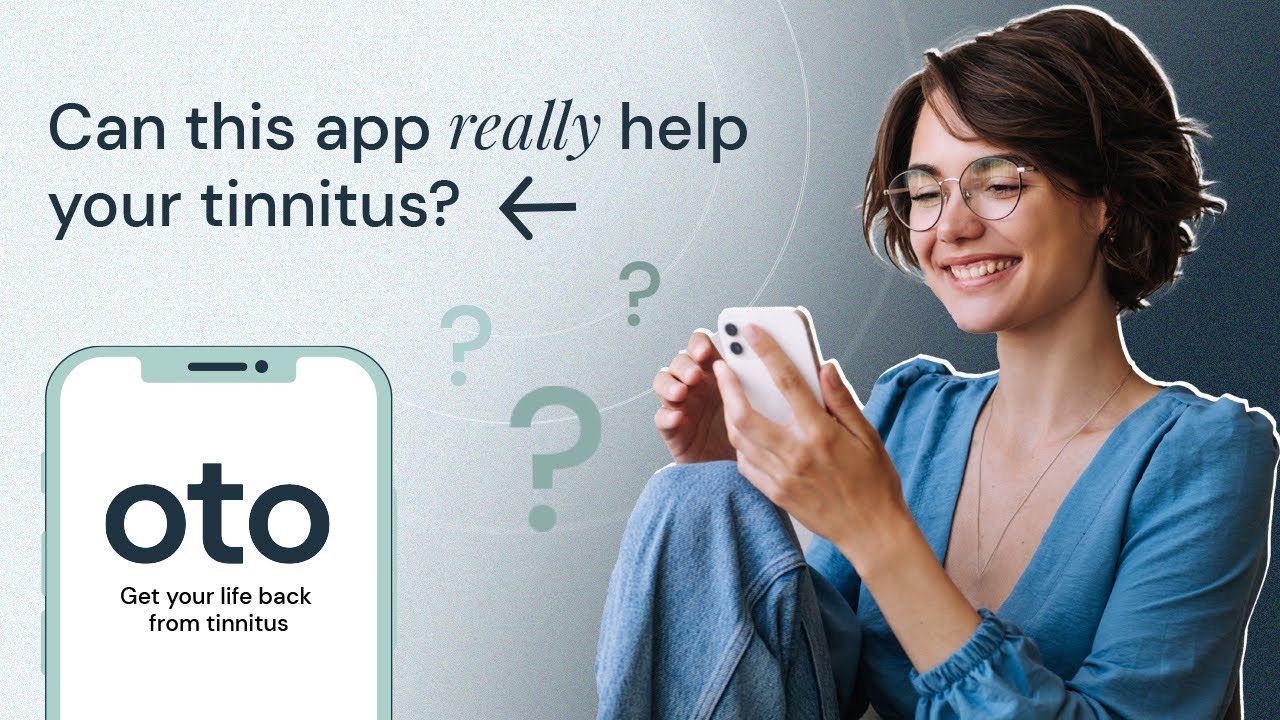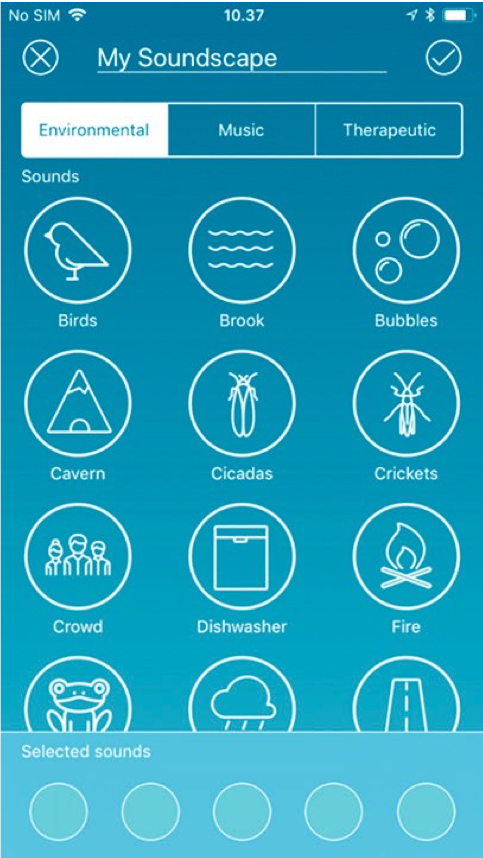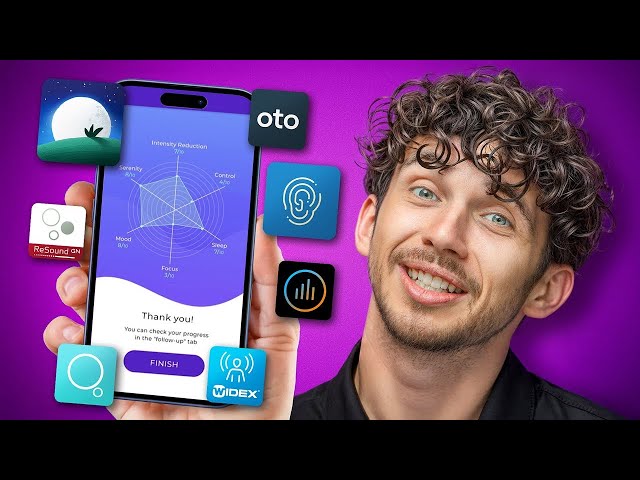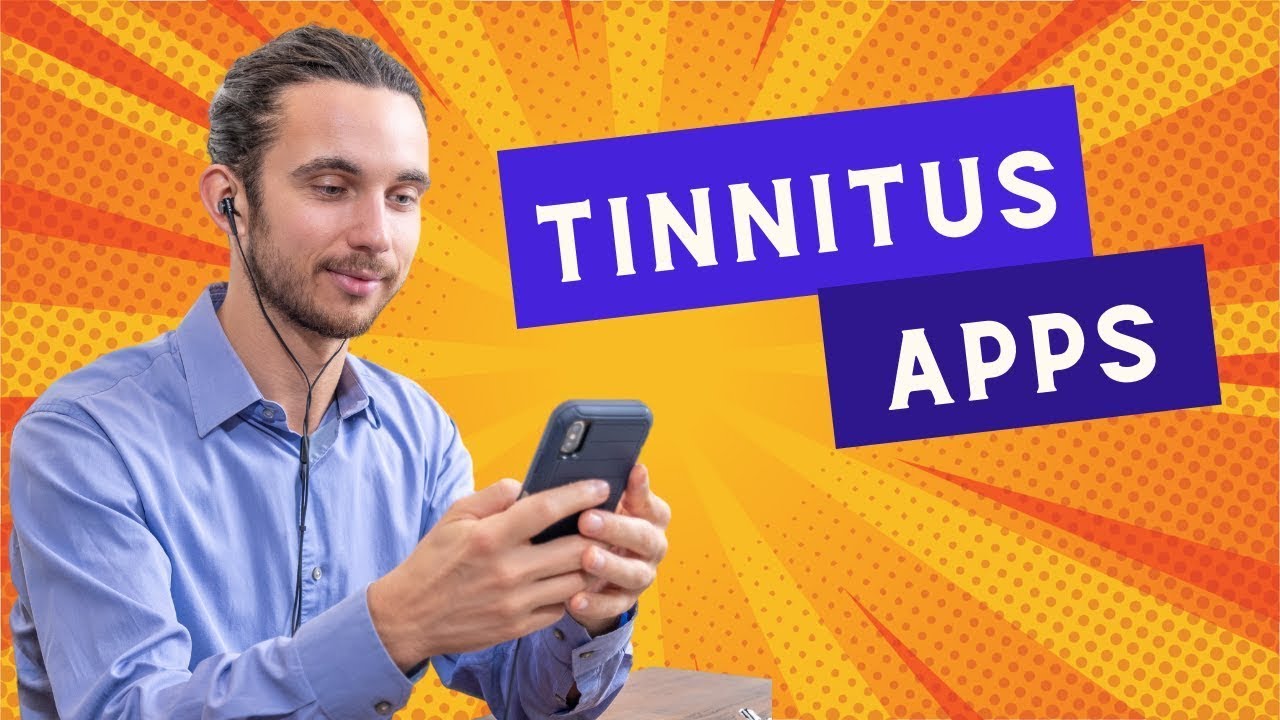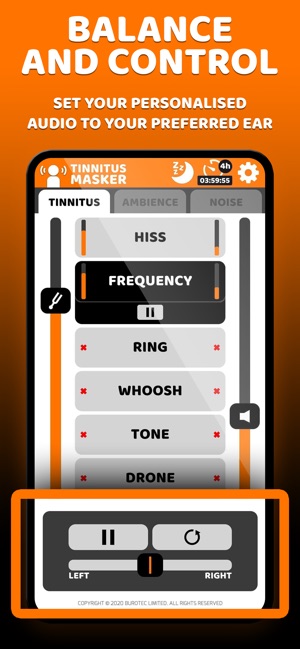Key Takeaways
- Modern tinnitus apps combine sound therapy with tracking features to provide personalized relief for those experiencing ringing in the ears
- Research shows that consistent use of tinnitus apps, especially when paired with hearing aids, can significantly reduce tinnitus distress over time
- The most effective tinnitus apps of 2023 include ReSound Relief, Starkey Relax, and Phonak Balance, offering science-backed therapeutic approaches
- Apps like MindEar are introducing innovative approaches that combine cognitive behavioral therapy with sound therapy for comprehensive tinnitus management
- For optimal results, tinnitus apps should be used for at least 30 minutes daily in quiet environments as part of a broader treatment plan
Tinnitus Apps That Actually Work
“Oto Tinnitus App …” from www.youtube.com and used with no modifications.
: Sound Therapy at Your Fingertips
Finding relief from the persistent ringing, buzzing, or hissing of tinnitus can feel like an endless quest. But in 2023, digital solutions are changing how we manage this frustrating condition. MindEar and other innovative tinnitus apps are putting effective sound therapy tools directly into the hands of millions seeking relief, offering hope where traditional treatments have fallen short.
Tinnitus affects roughly 15% of the global population, with varying degrees of severity. While there’s no outright cure, modern technology has made management more accessible than ever before. Today’s top tinnitus apps combine scientifically-backed sound therapy techniques with user-friendly interfaces that allow for personalized treatment approaches.
The most effective tinnitus relief comes from consistent, tailored management strategies—something that quality apps excel at providing. Let’s explore what makes these digital tools work, which features matter most, and how to choose the right app for your specific needs.
What Are Tinnitus Apps and How Do They Help
“Tinnitus Management in the Digital Age …” from www.audiologyonline.com and used with no modifications.
Tinnitus apps are specialized mobile applications designed to help manage the perception of ringing or noise in your ears. They work primarily through sound therapy—a technique that uses external sounds to alter how you perceive or react to tinnitus. Rather than claiming to “cure” tinnitus, these apps focus on making the condition more manageable by training your brain to either tune out the internal sounds or become less bothered by them.
The core function of most tinnitus apps involves delivering customizable soundscapes that can mask, distract from, or help you habituate to your tinnitus. Many also include educational resources, tracking tools, and guided exercises to provide a more comprehensive management approach. What makes these digital tools particularly valuable is their accessibility—they provide 24/7 relief options that travel with you wherever you go. For those interested in a deeper understanding, explore how tinnitus masking hearing aids work and their benefits.
Types of Sound Therapy Used in Apps
Sound therapy through tinnitus apps typically falls into several key categories, each with specific benefits. White noise and ambient sounds create a consistent audio backdrop that helps mask tinnitus sounds, making them less noticeable during quiet moments. Nature sounds like rainfall or ocean waves provide both masking and relaxation benefits, helping reduce the stress that often accompanies tinnitus flare-ups.
More advanced apps incorporate notched music therapy, which filters out frequencies matching your specific tinnitus pitch to help retrain your brain’s response. Frequency-matched tones generate sounds similar to your tinnitus that can help desensitize your brain over time. Some newer apps even include binaural beats—specialized sound patterns designed to induce relaxation and potentially alter brainwave patterns associated with tinnitus perception.
Common Sound Therapy Types in Tinnitus Apps
White Noise: Creates a consistent audio environment that masks tinnitus
Nature Sounds: Provides both masking and stress reduction benefits
Notched Music: Filters out frequencies matching your tinnitus to help retrain neural pathways
Frequency-Matched Tones: Uses sounds similar to your tinnitus to promote habituation
Binaural Beats: Specialized sound patterns that may alter brainwave activity
How Digital Sound Masking Affects Your Brain
The science behind tinnitus apps relates to how your brain processes sound. When you’re in a quiet environment, your auditory system becomes more sensitive, making internal sounds like tinnitus more noticeable. By introducing external sounds through an app, you create what audiologists call a “sound-enriched environment” that helps shift attention away from the tinnitus.
Over time, consistent sound therapy can help promote neuroplasticity—your brain’s ability to reorganize itself by forming new neural connections. Clinical studies suggest that this process can lead to habituation, where your brain learns to classify tinnitus sounds as unimportant background noise rather than something deserving attention and emotional response. A 2022 study of the ReSound Relief app demonstrated significant reductions in tinnitus distress after six months of regular use, supporting the neurological benefits of digital sound therapy.
Difference Between Free and Premium App Features
Free tinnitus apps typically offer a limited sound library with basic masking sounds and minimal customization options. While these can provide some relief, they often lack the personalized approach that makes sound therapy most effective. Premium versions, on the other hand, generally expand your options significantly with larger sound libraries, advanced customization tools, and detailed progress tracking capabilities.
The price difference between free and premium often translates to meaningful clinical benefits. Paid versions of apps like ReSound Relief and Phonak Balance include features specifically designed to promote long-term habituation, such as sound mixing capabilities, adjustable frequency filters, and integration with hearing devices. For serious tinnitus sufferers, the investment in a premium app (typically $5-15 monthly) often proves worthwhile compared to the cost and inconvenience of frequent clinical visits.
5 Must-Have Features in Effective Tinnitus Apps
“ReSound Relief: Tinnitus Management in …” from www.audiologyonline.com and used with no modifications.
Not all tinnitus apps are created equal. When evaluating which app might work best for your needs, it’s important to look for key features that research has shown to contribute to successful outcomes. The most effective apps combine sound therapy with educational components, personalization options, and tools to maintain consistency in your tinnitus management routine.
1. Customizable Sound Libraries
The most effective tinnitus apps offer extensive libraries of sounds that can be tailored to your specific type of tinnitus. Look for apps that provide not just white noise, but a range of options including pink noise, brown noise, and environmental sounds like rainfall or ocean waves. The ability to layer multiple sounds together creates truly personalized soundscapes that can better match your preferences and tinnitus characteristics.
Research shows that personalized sound therapy yields better results than generic approaches. A 2021 study found that users who could customize their sound therapy reported 37% greater reduction in tinnitus distress compared to those using preset sound options. Top apps like ReSound Relief offer mixing capabilities that let you combine up to five different sounds, adjusting each independently to create the perfect acoustic environment for your unique tinnitus profile.
2. Volume and Frequency Controls
Precise control over both volume and frequency is crucial for targeting your specific tinnitus sounds. The most effective apps allow you to adjust not just overall volume but also specific frequency bands within each sound. This granular control helps you create masking sounds that closely match your tinnitus pitch, which research suggests is more effective for habituation.
Advanced apps include sound matching tools that help you identify the exact frequency of your tinnitus. By generating test tones at different frequencies, these features help you pinpoint which sounds best mask or complement your tinnitus. Once identified, you can save these settings as personalized profiles for quick access during tinnitus flare-ups. For more insights on managing tinnitus, you might find this article on tinnitus relief for veterans helpful.
3. Sleep Timers and Bedtime Modes
Nighttime is often when tinnitus becomes most problematic, as the quiet environment amplifies the perception of internal sounds. Quality tinnitus apps address this with specialized sleep modes that include gentle fade-out timers, reduced screen brightness, and sounds specifically designed for sleep enhancement. Look for apps with programmable sleep schedules that can automate your nighttime routine. For more information, you can explore how a new app could help relieve ringing in the ears.
The best sleep-focused features include adjustable fade-out times (ranging from 30 minutes to 8 hours) and the ability to mix relaxing sounds that promote both tinnitus relief and improved sleep quality. Some apps like MindEar also incorporate sleep-specific guided meditations that help address the anxiety-tinnitus cycle that often disrupts sleep patterns.
4. Progress Tracking Tools
Monitoring your tinnitus symptoms over time provides valuable insights into what’s working and what triggers might be worsening your condition. Top-tier apps include detailed tracking features that log usage patterns, symptom severity, and environmental factors. These digital diaries help identify correlations between lifestyle factors and tinnitus intensity.
The most sophisticated tracking tools use standardized assessment methods like the Tinnitus Functional Index (TFI) or Tinnitus Handicap Inventory (THI) to quantify your progress. By completing these assessments at regular intervals, you can generate charts showing your improvement over time. This data not only motivates continued use but also provides valuable information to share with healthcare providers who are part of your treatment team. For more insights, you can explore how a new app could help relieve tinnitus.
5. Hearing Test Integration
Apps that integrate basic hearing assessment tools provide a more comprehensive approach to tinnitus management. Since hearing loss and tinnitus are often connected, these features help you monitor both conditions simultaneously. The best apps include tone-based hearing screenings that can detect potential hearing issues that might be contributing to your tinnitus.
Do Tinnitus Apps Really Work
“The 5 BEST Tinnitus Apps of 2025 – YouTube” from www.youtube.com and used with no modifications.
? What Science Says
The scientific evidence supporting tinnitus apps continues to grow stronger each year. Clinical research demonstrates that digital sound therapy, when used consistently, can provide meaningful relief for many tinnitus sufferers. A 2022 systematic review examining 15 different studies found that mobile apps providing sound therapy showed statistically significant improvements in tinnitus severity scores compared to no treatment.
Key Findings from Recent Research on Tinnitus Apps
• 6-month study of ReSound Relief app showed 31% reduction in tinnitus distress
• Combining hearing aids with specialized apps improved outcomes by 42%
• Consistent daily use (30+ minutes) yielded better results than occasional use
• Personalized soundscapes outperformed generic white noise by 37%
• Users reported improved sleep quality as a significant secondary benefit
Particularly noteworthy is a study published in the International Journal of Audiology that followed 52 patients using the ReSound Tinnitus Relief app for six months. Participants showed significant improvements in standardized tinnitus assessment scores, with the greatest benefits seen in those who used the app consistently for at least 30 minutes daily. The study also found that combining the app with hearing aids (when appropriate) produced even better outcomes.
While not everyone experiences the same level of relief, the data clearly shows that app-based sound therapy is a legitimate, evidence-backed approach to tinnitus management. Perhaps most encouraging is that these digital tools show comparable efficacy to some in-clinic sound therapy approaches, but with greater accessibility and significantly lower cost.
It’s important to note that apps work best as part of a comprehensive tinnitus management strategy. Researchers emphasize that digital tools should complement, not replace, professional evaluation and treatment planning, especially for severe cases.
Clinical Studies on Digital Sound Therapy
The efficacy of digital sound therapy has been validated through several well-designed clinical studies. A comprehensive 2022 analysis published in the Journal of Clinical Medicine reviewed data from multiple trials and found that app-based sound therapy produced measurable improvements in tinnitus severity scores. The most significant finding was that personalized sound therapy—the kind offered by today’s leading apps—outperformed generic masking approaches by a considerable margin.
One particularly compelling study followed 52 patients using the ReSound Tinnitus Relief app for six months. Participants were instructed to use the application for at least 30 minutes daily in quiet environments. The results showed an average reduction of 31% in tinnitus distress scores, with improvements beginning around the three-month mark and continuing to increase with longer use. This supports the notion that tinnitus apps require consistent use over time to achieve maximum benefit.
Success Rates Compared to Traditional Treatments
When comparing digital sound therapy to traditional clinical approaches, the data shows encouraging results. App-based interventions demonstrate comparable effectiveness to in-clinic sound therapy for mild to moderate tinnitus, with the added advantages of convenience and lower cost. A 2021 comparative study found that patients using premium tinnitus apps showed similar improvement rates (approximately a 25-35% reduction in severity scores) to those receiving in-person sound therapy sessions.
However, it’s worth noting that for severe tinnitus cases, especially those with significant psychological components, clinical approaches that combine sound therapy with cognitive behavioral therapy still show superior outcomes. This is why newer apps like MindEar are integrating psychological components alongside sound therapy, attempting to bridge this efficacy gap.
Who Benefits Most from App-Based Relief
Research indicates that certain tinnitus sufferers may experience greater benefits from digital sound therapy than others. Those with mild to moderate tinnitus symptoms typically respond best to app-based interventions, particularly when the tinnitus is related to noise exposure or age-related hearing changes. People with consistent, unchanging tinnitus sounds tend to see better results than those with fluctuating symptoms.
Interestingly, patients who also use hearing aids show enhanced responses to tinnitus apps. A 2022 study published in the International Journal of Audiology found that combining hearing aids with specialized tinnitus apps improved outcomes by approximately 42% compared to using either intervention alone. This synergistic effect occurs because hearing aids address the underlying hearing deficits while the app provides targeted sound therapy for the tinnitus symptoms.
Top-Rated Tinnitus Apps Worth Trying
“5 BEST Sound Therapy Apps For Tinnitus …” from www.youtube.com and used with no modifications.
Based on both clinical research and user reviews, several tinnitus apps stand out in 2023 for their effectiveness, feature sets, and usability. ReSound Relief continues to lead the pack with its comprehensive approach that includes customizable soundscapes, detailed tracking tools, and educational resources. Its sound mixing capabilities and frequency-specific adjustments make it particularly effective for personalized therapy. For those interested in exploring more about tinnitus relief, the progressive tinnitus management approach offers additional insights into effective strategies.
The newest noteworthy entrant is MindEar, which uniquely combines sound therapy with cognitive behavioral therapy techniques. Early clinical trials show promising results, particularly for users whose tinnitus has significant psychological components. For those seeking a free starting option, Starkey Relax offers surprisingly robust features despite its zero-cost entry point, though its premium version provides significantly more customization options.
Apps That Connect With Hearing Aids
For the estimated 90% of tinnitus sufferers who also experience some degree of hearing loss, apps that integrate with hearing aids provide an optimal solution. The ReSound Smart 3D app pairs seamlessly with the company’s hearing aids, allowing sound therapy to be streamed directly through the devices. This integration ensures the therapeutic sounds don’t interfere with everyday hearing needs and can be discreetly used in any environment.
Similar functionality exists with the Phonak Balance app (compatible with Phonak hearing aids) and the Starkey Thrive app (which works with Starkey devices). These integrated systems allow precise control over both amplification for hearing loss and sound therapy for tinnitus, creating a comprehensive management approach. The convenience of controlling both functions through a single app significantly improves user compliance, which research shows is critical for long-term tinnitus relief.
Best Apps for Nighttime Tinnitus
Nighttime often presents the greatest challenge for tinnitus sufferers, as the quiet bedroom environment can make internal sounds seem louder. Apps specifically designed with sleep features offer valuable relief during these critical hours. The Sound Oasis Sleep Therapy app stands out with its specialized sleep sounds that gradually change throughout the night to maintain effectiveness without disrupting sleep cycles.
For those who find meditation helpful, the Beltone Tinnitus Calmer app combines gentle soundscapes with guided sleep meditations specifically designed for tinnitus sufferers. Its progressive relaxation exercises help address the anxiety-tinnitus cycle that often prevents restful sleep. All quality sleep-focused apps include customizable fade-out timers and the ability to run continuously throughout the night without draining your device battery.
Options for Different Types of Tinnitus Sounds
Tinnitus manifests differently across individuals—from high-pitched ringing to low humming, buzzing, or even pulsing sounds. The most effective apps acknowledge this variation by offering sound libraries specifically targeted to different tinnitus types. For high-frequency tinnitus (the most common type), apps like Phonak Balance provide specialized high-frequency masking sounds that better blend with and mask the internal ringing.
Those experiencing low-frequency tinnitus benefit from apps like myNoise, which offers exceptionally rich bass soundscapes that can effectively mask rumbling or humming sensations. For pulsatile tinnitus (rhythmic sounds that match your heartbeat), the ReSound Relief app includes specialized rhythmic masking sounds that can help synchronize with and diminish the perception of the internal pulsing.
How to Use Tinnitus Apps for Maximum Relief
“™Tinnitus Relief Sound Masking on the …” from apps.apple.com and used with no modifications.
Achieving optimal results from tinnitus apps requires more than just downloading and occasionally using them. The research consistently shows that effectiveness depends largely on how you integrate these tools into your daily routine. Establishing consistent usage patterns, combining the app with complementary relief strategies, and tracking your progress are all essential components of successful digital tinnitus management. For instance, understanding how neuroplasticity impacts tinnitus can enhance your approach to using these apps effectively.
Daily Usage Patterns That Boost Effectiveness
Clinical studies indicate that tinnitus apps show the greatest benefit when used for at least 30 minutes daily, ideally during the quietest parts of your day when tinnitus is most noticeable. Many experts recommend dividing this time into two sessions—one in the morning and one before bed—to provide consistent neural stimulation that promotes habituation. Rather than using the app only when tinnitus is bothersome, scheduled daily use helps retrain your brain’s response to tinnitus sounds over time.
The environment where you use your app also matters significantly. Creating a quiet background setting maximizes the contrast between your tinnitus and the therapeutic sounds, enhancing the masking or habituation effect. When possible, use high-quality headphones that can deliver precise frequency responses, especially during your dedicated therapy sessions. For nighttime use, however, comfortable pillow speakers or sleep headphones designed for side-sleeping may prove more practical. To understand more about how these devices work, you can explore how tinnitus masking hearing aids work.
Combining Apps With Other Relief Strategies
Tinnitus management works best as a multi-faceted approach. While sound therapy apps form an excellent foundation, combining them with complementary strategies can significantly enhance results. Stress reduction techniques like mindfulness meditation have been shown to reduce tinnitus perception, as anxiety and tinnitus severity are closely linked. Many leading apps now include guided relaxation sessions specifically designed for tinnitus sufferers.
Dietary modifications can also complement your app-based therapy. Research suggests that reducing consumption of caffeine, alcohol, and high-sodium foods may help minimize tinnitus severity for some individuals. Physical activity appears to help as well, with regular exercise showing modest but consistent benefits for tinnitus management in multiple studies. The tracking features in premium tinnitus apps can help you identify correlations between these lifestyle factors and your symptom intensity.
Signs Your App Strategy Is Working
Improvement from tinnitus apps typically occurs gradually rather than overnight, making it important to recognize the subtle signs of progress. The most common initial indicator is an increased ability to shift attention away from your tinnitus, even if the sound itself hasn’t changed. You might notice you’re going longer periods without consciously thinking about the noise, or that it takes less effort to refocus when you do notice it.
Sleep improvements often represent another early success marker. Many users report falling asleep more easily and experiencing fewer nighttime awakenings before they notice significant daytime symptom changes. The comprehensive tracking features in apps like ReSound Relief and MindEar can help quantify these improvements, providing objective evidence of progress that might otherwise be difficult to perceive during the gradual habituation process.
When Apps Aren’t Enough: Next Steps for Relief
While tinnitus apps provide significant benefits for many users, they aren’t always sufficient as a standalone treatment. If you’ve consistently used a quality app for three months without noticeable improvement, or if your tinnitus significantly impacts your quality of life, it’s time to consider additional interventions. A comprehensive evaluation by an audiologist or otolaryngologist (ENT) can identify underlying conditions that might be contributing to your tinnitus and requiring medical treatment.
For persistent cases, professional tinnitus retraining therapy (TRT) combines more intensive sound therapy with specialized counseling to address both the auditory and emotional aspects of tinnitus. Cognitive behavioral therapy has shown particularly strong evidence for reducing tinnitus distress, even when the sound itself remains unchanged. Some hearing clinics now offer hybrid approaches that integrate app-based home therapy with professional in-clinic sessions, providing the benefits of both convenience and specialized care.
Frequently Asked Questions
As tinnitus apps have gained popularity, several common questions have emerged from users trying to maximize their effectiveness. The following answers are based on both clinical research and feedback from experienced users of various tinnitus management applications.
Understanding these practical aspects of app-based therapy can help you establish realistic expectations and optimize your results. Remember that while apps provide valuable tools, they work best when used as part of a comprehensive approach to tinnitus management.
How long should I use a tinnitus app each day?
Clinical studies suggest that optimal results come from using tinnitus apps for at least 30 minutes daily, though some users benefit from longer sessions. Rather than one extended session, research indicates that dividing your usage into multiple shorter sessions throughout the day (particularly during quiet moments when tinnitus is most noticeable) may enhance effectiveness. For sleep-specific issues, continuous use throughout the night with appropriate volume levels is recommended.
Consistency appears more important than duration—regular daily use of even 15-20 minutes shows better outcomes than sporadic longer sessions. Most importantly, patience is essential; significant improvement typically begins around the three-month mark, with continued progress over six months to a year of regular use.
Can tinnitus apps make my symptoms worse?
When used appropriately, tinnitus apps rarely worsen symptoms. However, playing therapeutic sounds at excessive volumes can potentially cause temporary threshold shifts or even contribute to further hearing damage, which might indirectly intensify tinnitus. Follow the general guideline of keeping therapeutic sounds at a comfortable level where you can still carry on a conversation—never use them to completely drown out your tinnitus by increasing volume to uncomfortable levels.
Do I need headphones to use tinnitus apps effectively?
While headphones can enhance the precision and effectiveness of sound therapy by delivering specific frequencies directly to your auditory system, they aren’t strictly necessary. Quality speakers in a quiet room can provide significant benefits, especially for daytime use. For sleep, specialized pillow speakers or sleep headphones designed for side-sleeping often provide the best combination of comfort and effectiveness. If you have hearing aids with streaming capabilities, using your tinnitus app through these devices offers optimal convenience and effectiveness.
Are free tinnitus apps as good as paid versions?
Free tinnitus apps typically offer basic functionality that can provide some relief, but research indicates that premium versions generally deliver superior results. The enhanced customization options, expanded sound libraries, and detailed tracking features in paid apps allow for more personalized therapy approaches. Most premium apps offer free trials, making it worthwhile to test several options before committing to a subscription. For users with significant tinnitus impact, the modest cost of premium apps (typically $5-15 monthly) represents a worthwhile investment compared to the potential improvement in quality of life.
Should I tell my doctor I’m using a tinnitus app?
Absolutely—informing your healthcare providers about your tinnitus app usage creates important continuity in your care plan. Your audiologist or ENT specialist can help interpret the data from app tracking features, suggest optimal settings based on your specific hearing profile, and integrate the digital therapy with other treatment approaches. Some clinicians now actively incorporate app recommendations into their tinnitus management protocols, and many can provide guidance on which features might best address your particular tinnitus characteristics. For example, the ReSound Relief app is one such tool that can be discussed with your healthcare provider.
Remember that while apps provide valuable tools for managing tinnitus, they shouldn’t replace proper medical evaluation. Sudden or severe tinnitus should always prompt a medical consultation to rule out underlying conditions requiring specific treatment.
With the right approach and realistic expectations, today’s advanced tinnitus apps can provide significant relief from the frustration and discomfort of persistent ear ringing. By combining personalized sound therapy with tracking tools and educational resources, these digital solutions are transforming tinnitus management for millions of sufferers worldwide.
Tinnitus apps have become increasingly popular as a tool to help manage the symptoms of tinnitus. These apps often include features such as sound therapy, relaxation exercises, and tracking capabilities to monitor symptoms over time. For those suffering from tinnitus due to PTSD, apps like the ReSound Relief app can provide significant relief by offering personalized soundscapes and support.

